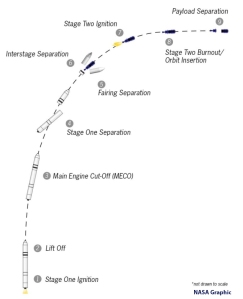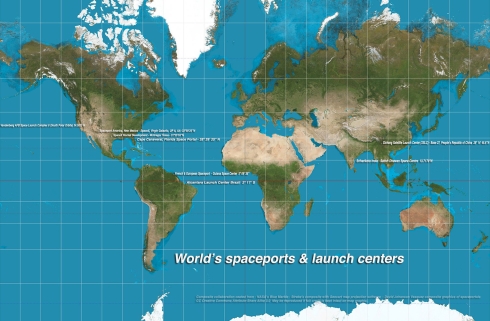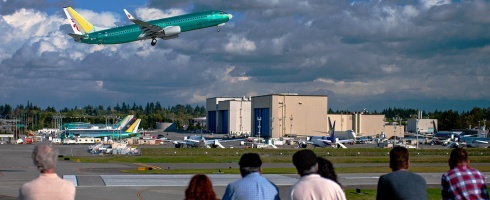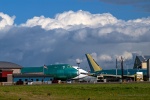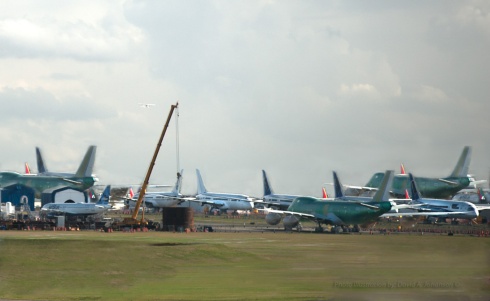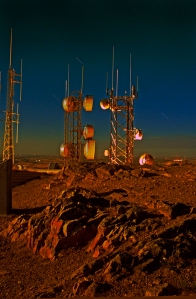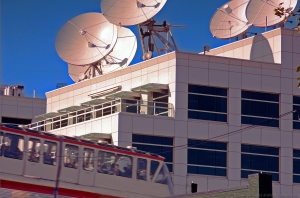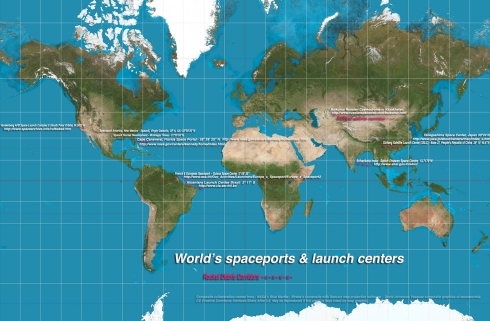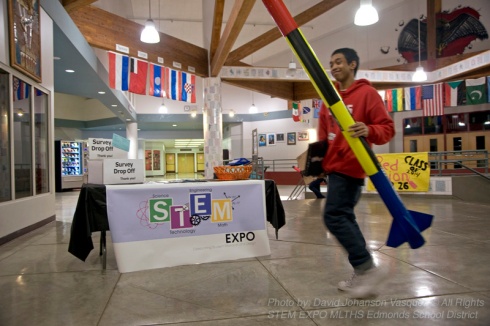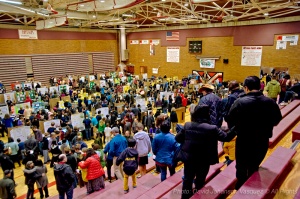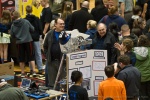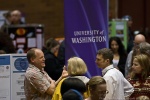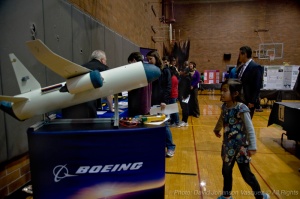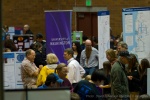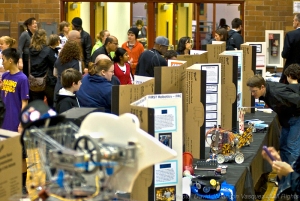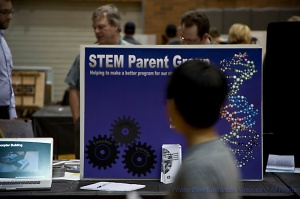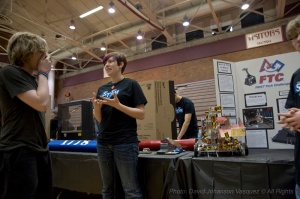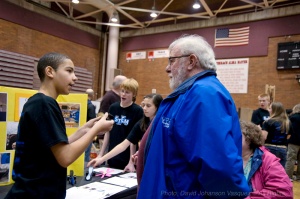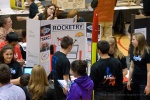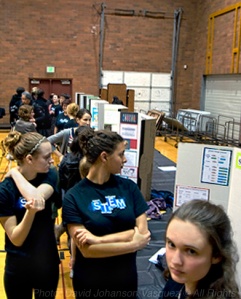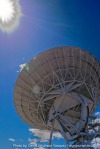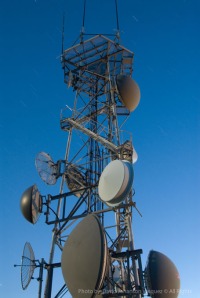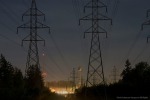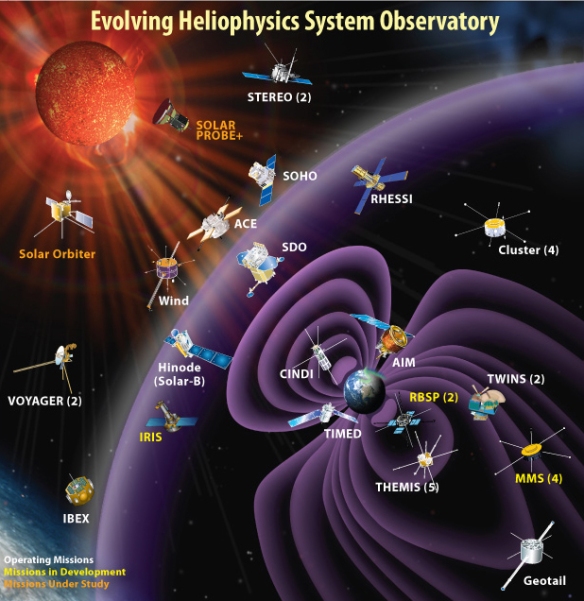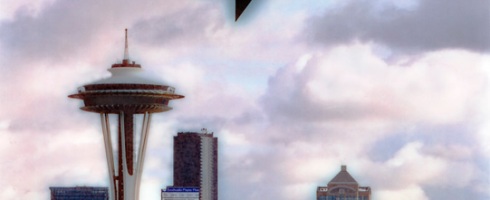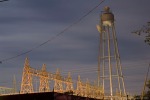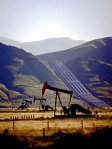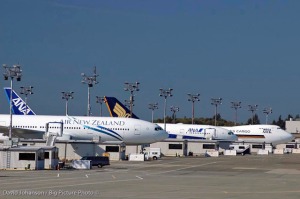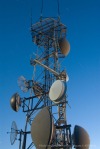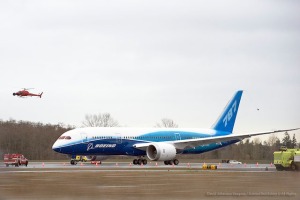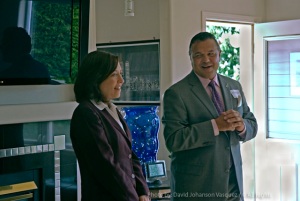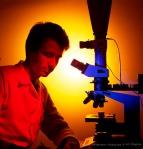
A photo illustration featuring an arc of potentially hazardous asteroids (PHAs) entering the Earth’s orbital path. — Photo illustration: D a v i d A J o h a n s o n
Multimedia eLearning program by: D a v i d A. J o h a n s o n ©
The author is a multimedia photographer, CTE instructor and a former Boeing scientific photographer. For an alternative graphic presentation of this program, please visit: http://BigPictureOne.wordpress.com
Last night I was inspired to take photos of a dramatic moonrise appearing above the Cascade Mountains in the Pacific Northwest. It was an exceptionally clear evening, which enabled the luminous clarity of the moon to reveal its turbulent history.
In fact, the Earth shares some frightening historic parallels with all of its neighboring planets within our solar system. Indeed, of all world’s collateral past and future events, it is the asteroid or comet nemeses which present a potential close encounter of the worst kind!
Ignorance Is Bliss
Since the beginning of time, on a nearly daily basis, these extraterrestrial objects known as an asteroid come perilously close (relative to celestial distance) to our planet Earth. NASA scientists developed a method of categorizing Near Earth Objects (NEO) for tracking the orbital path of asteroids and comets. The space agency’s Near-Earth Object Observation (NEOO) Program, often referred to “Spaceguard” tracks and catalogues celestial objects coming to within 30 million miles (96,560,400 kilometers) of Earth. Ground and space-based telescope resources are used for increased surveillance and tracking of these unwelcome space nomads.
Potentially Hazardous Asteroid (PHAs) is what NASA currently uses for its parameters to gauge an asteroid’s potential impact threat to the Earth. If an asteroid is projected to travel within the moon and Earth’s orbit, it’s considered a potentially Earth-impact threat and depending on its specific trajectory, it is then placed into groups (Athen, Apollo Amor) for enhanced analysis. If a PHA were detected, it should not be assumed that an imminent Earth-collision is about to happen, however, understating or ignoring this catastrophic potential could lead to an early and permanent retirement of most life on Earth.

Blinded By The Light of Day
On February 15, 2013 the asteroid 367943 Duende was long-predicted to approach and pass dangerously close to Earth. On that morning, just after sunrise near Chelyabinsk Oblast, Russia a 20 meter sized meteor exploded as it entered the Earth’s atmosphere from a shallow angle. A radiant superbolide meteor blast occurred at an elevation of just under 30 km (18 miles) creating an intense light brighter than the Sun.
The estimated energy released was equivalent to approximately 500 kilotons of TNT, upwards of 30 times the explosive energy of the atomic bomb detonated above Hiroshima. Regional hospitals treated approximately 1,500 people for injuries and at least 7,000 buildings were damaged in half a dozen cities as an indirect result of the meteor’s shock wave.
The Chelyabinsk asteroid literally snuck under the radar as not all 15 meters wide, near-Earth objects are tracked and catalogue. The trajectory of the asteroid aligned so close to the Sun that it was not visible to the instruments responsible for locating such objects.
Within 16 hours after this unexpected event, the forecasted asteroid 367943 Duende perilously flew past Earth by 27,700 km without incident. In the days that followed, there were increased sightings of bright meteors streaking through the night sky. International space agencies and sources concluded that due to the divergent trajectories of the two celestial objects, they could not possibly be related. Consequently, this event illustrates how unprepared the World community currently is for developing essential contingencies to mitigate the range of potential dangers that asteroids present.
A Sobering Series Of Events
By coincidence, the Chelyabinsk event is cited as the second largest asteroid to impact the Earth’s atmosphere in recorded history. The larger, 1908 Tunguska event was caused from a 50 meter wide asteroid strike, which detonated at a 28,000 foot elevation. In an instant this event leveled approximately 800 square miles of Siberian forest that contained 80 million trees. The subsequent fireball is estimated to have released the energy equivalent of 185 Hiroshima atomic bombs.
The mother of all meteors to have collided with the Earth is the infamous Chicxulub asteroid, which impacted Mexico’s Yucatán Peninsula 65 − 66 million years ago. This mammoth asteroid caused a 10 mile wide crater and was from a 60 km (37.28 mile) fragment associated with the larger 170 km wide parent body. It is estimated the Chicxulub impactor released the equivalent 100 teratons of TNT, which also qualifies as the largest explosion to happen on the planet. This asteroid’s impact is credited with the Cretaceous-Paleogene extinction event, causing the worldwide extinction of most dinosaurs.
Size Does Matter
To put the potential horrific effects of asteroids into perspective, we can use past asteroid encounters to determine the likely scale of catastrophic damage that would likely occur.
An asteroid about 40 meters in width could level the largest cities on the globe. An asteroid or comet of 400 meters, similar in size to the asteroid which NASA has forecasted to come near the Earth on Halloween, would cause serious geological damage to an entire continent.
An asteroid about 1000 meters or larger, would likely end most life on Earth.
Trick Or Treat
Doomsday preppers are exceptionally excited regarding what NASA scientists are tracking and forecasting for asteroid 2015 TB 145. This 400 meter-wide (1,300 feet) is tracked using optical observatories and the radar technology of NASA’s Deep Network at Goldstone, California. Known as the ‘Great Pumpkin’ Halloween Asteroid, it is predicted to safely travel slightly beyond the moon’s orbit on October 31 at 10:05 a.m. PDT., before returning back on its circular journey into the vast realm of our solar system.
According to the Minor Planet Center, which catalogs Near-Earth objects (NEOs) this Halloween’s asteroid visitor is the closest known approach by any substantial celestial object until asteroid 1999 AN10 – which is a massive 800 meter sized object, whose orbit will return it near our moon in August 2027. ~
Resources And References Relating To This Subject Matter.
Halloween Asteroid a Treat for Radar Astronomy — http://neo.jpl.nasa.gov/news/news190.html
The Tunguska Impact — 100 Years Latter — http://science.nasa.gov/science-news/science-at-nasa/2008/30jun_tunguska/
Near-Earth Object Program — http://neo.jpl.nasa.gov/
Near Earth Object Groups — http://neo.jpl.nasa.gov/neo/groups.html
NEO Earth Close Approaches — http://neo.jpl.nasa.gov/ca/
Asteroid to narrowly miss Earth on Halloween — http://www.cnn.com/2015/10/21/us/asteroid-earth-nasa-halloween-feat/
Asteroid that could wipe out London — http://www.express.co.uk/news/science/592987/End-of-the-world-asteroid-Blood-Moon-September-apocalypse-armageddon-comet-meteor








